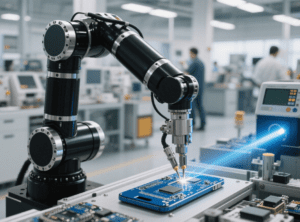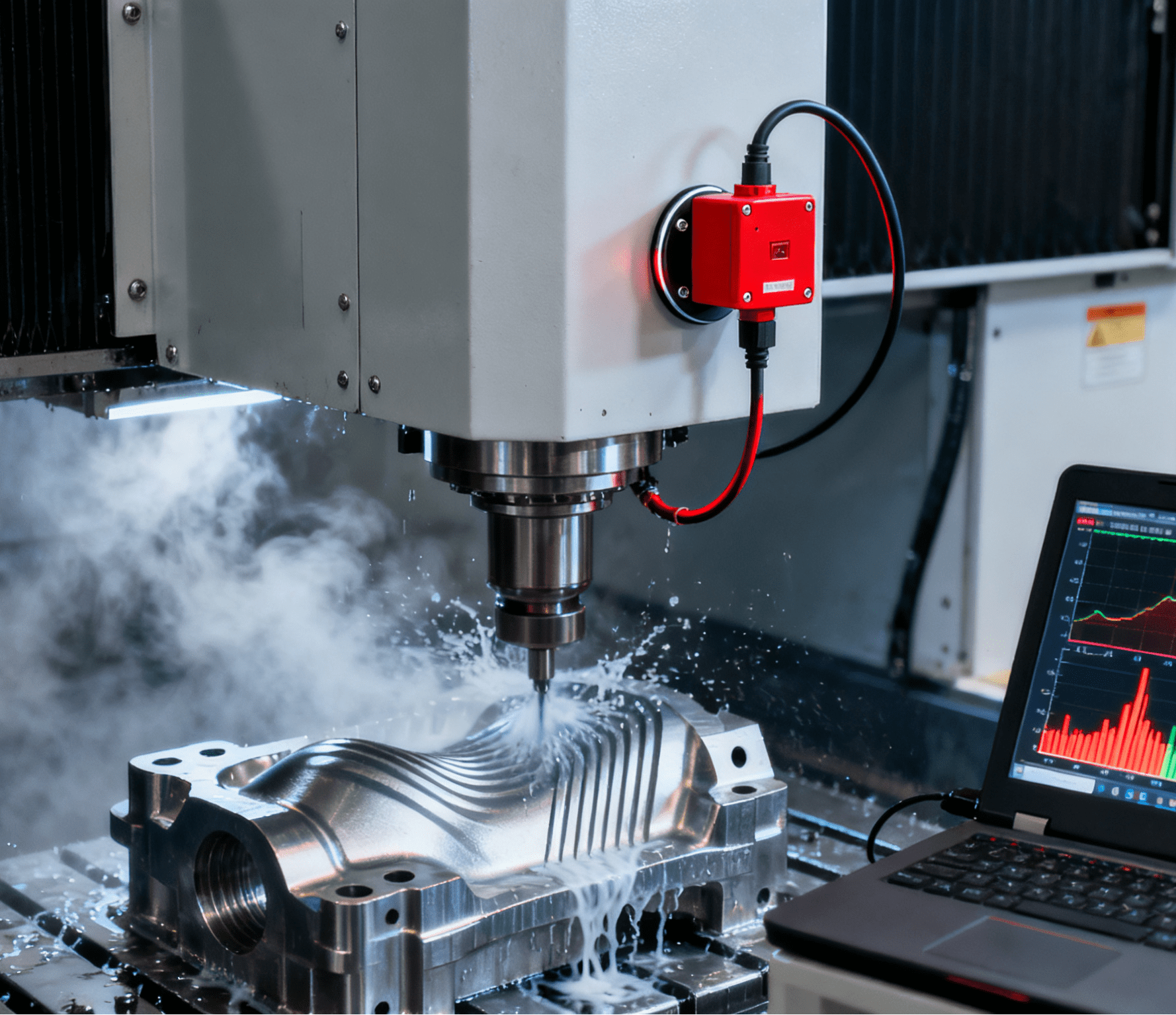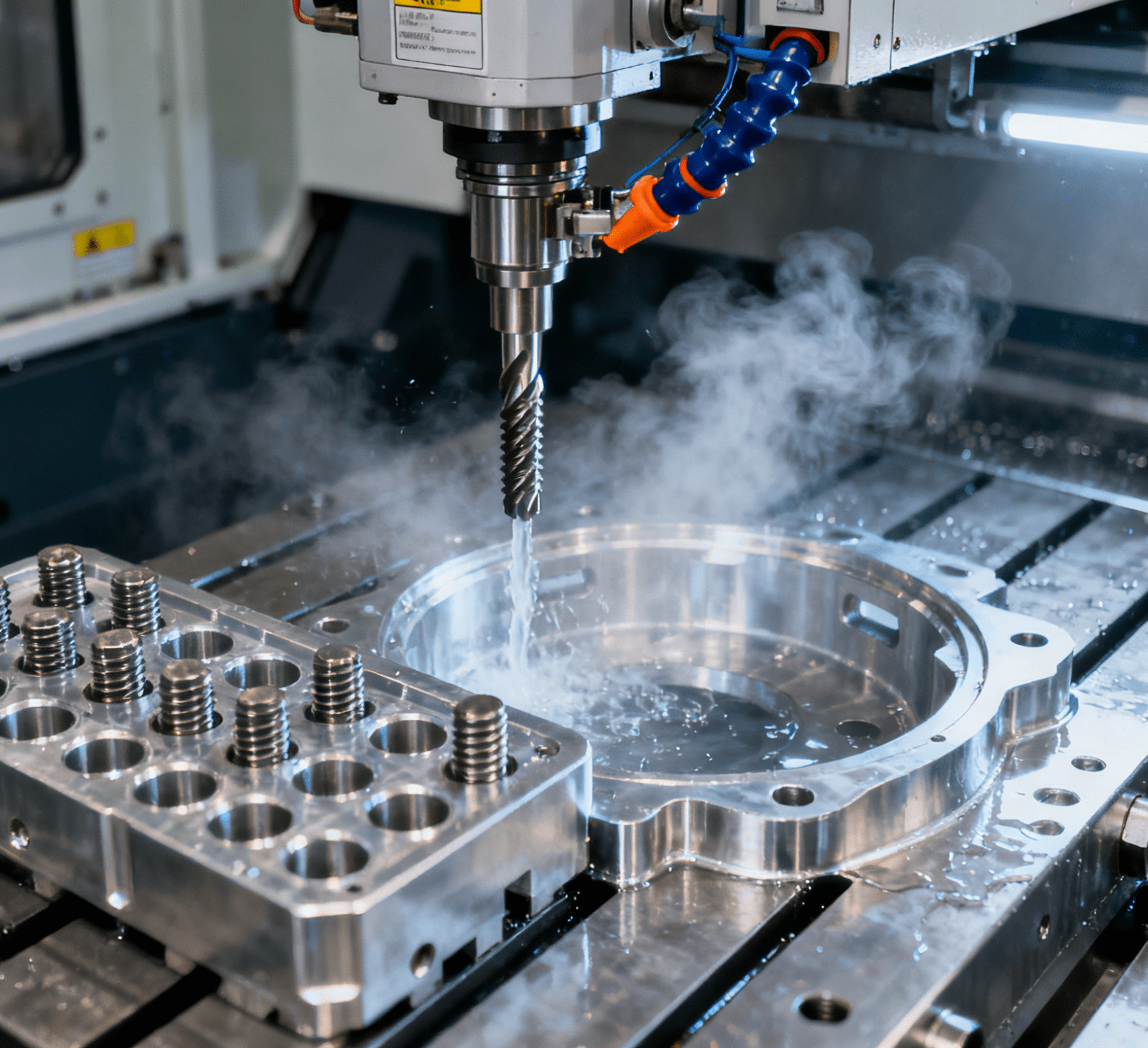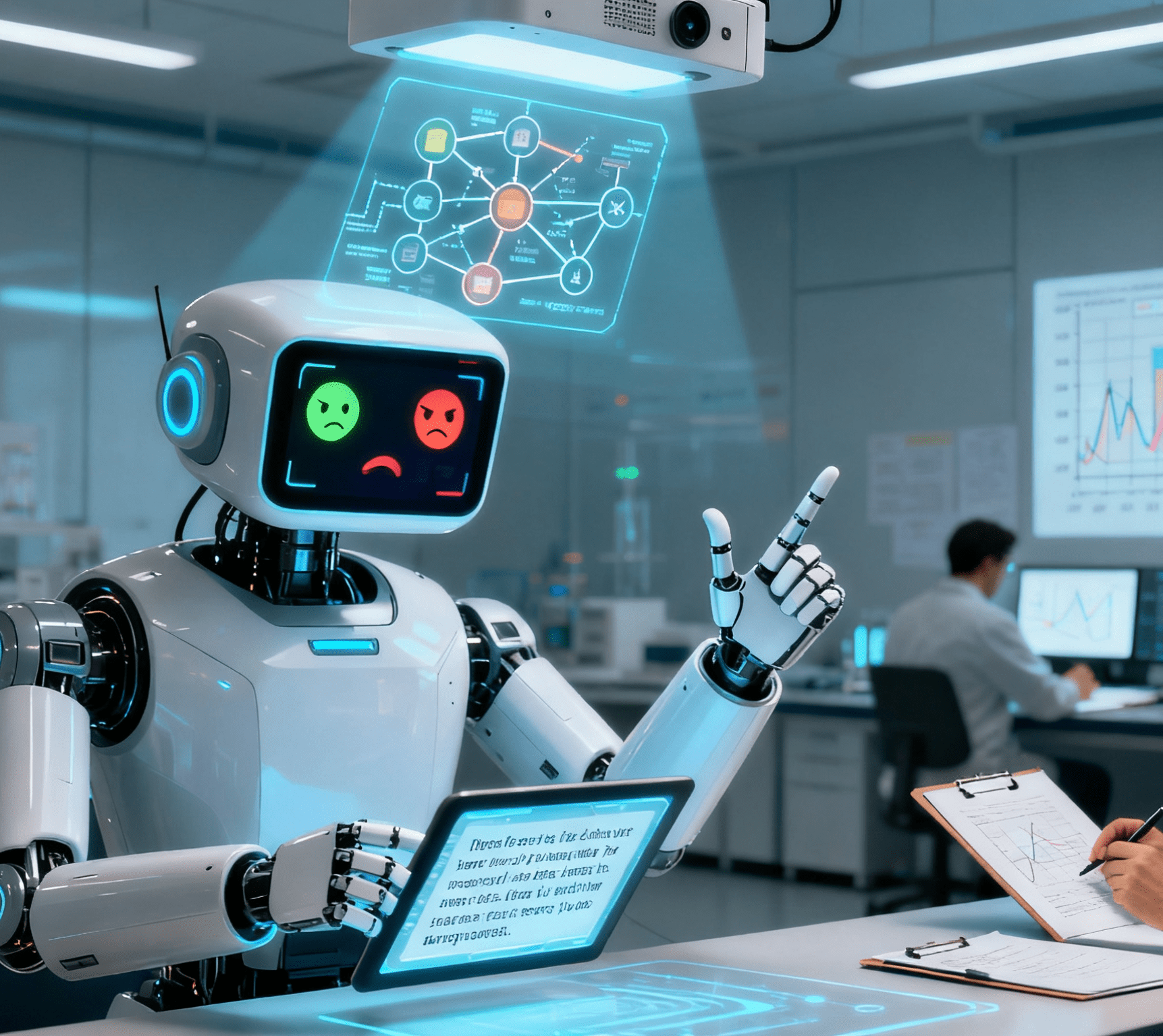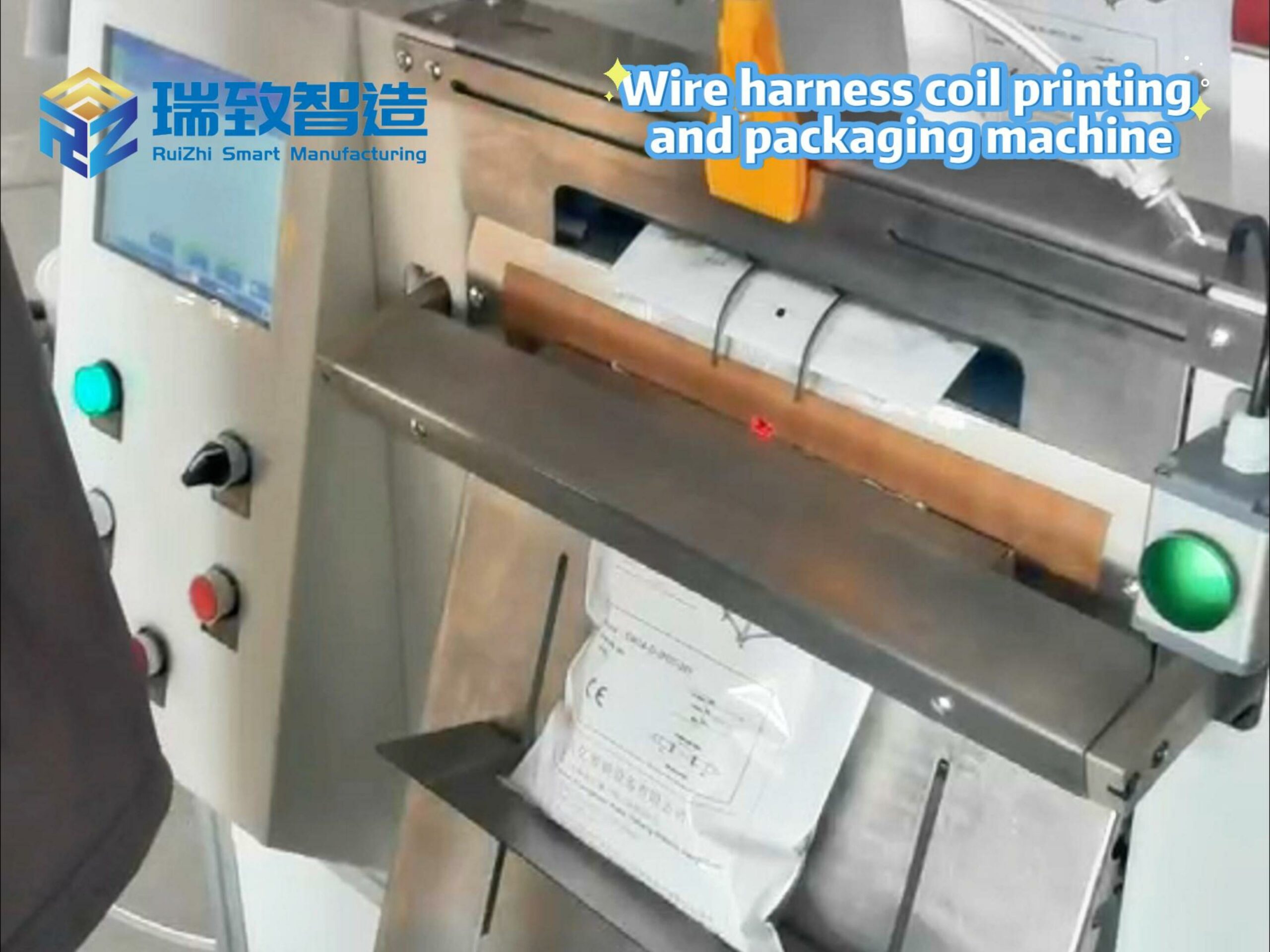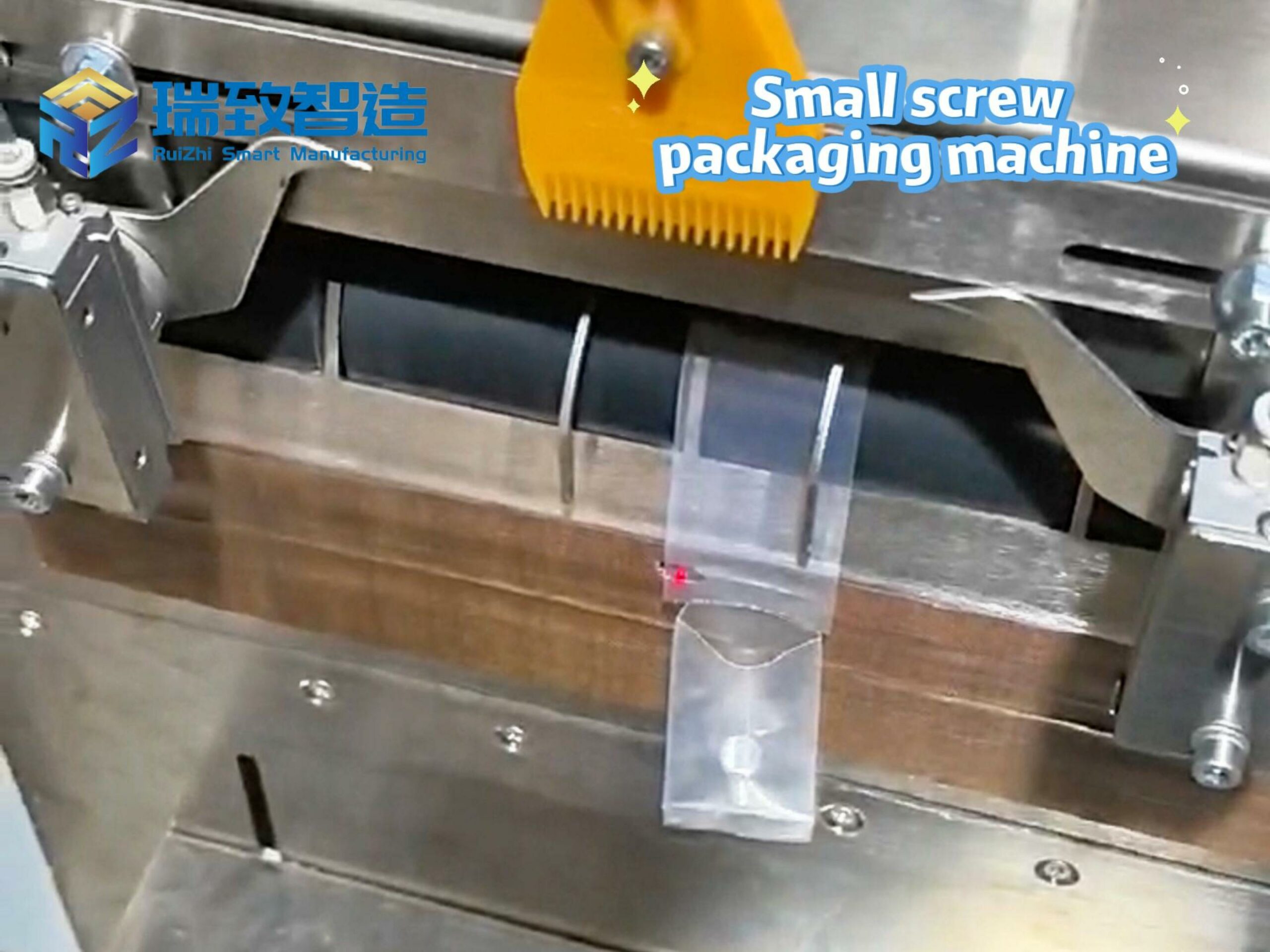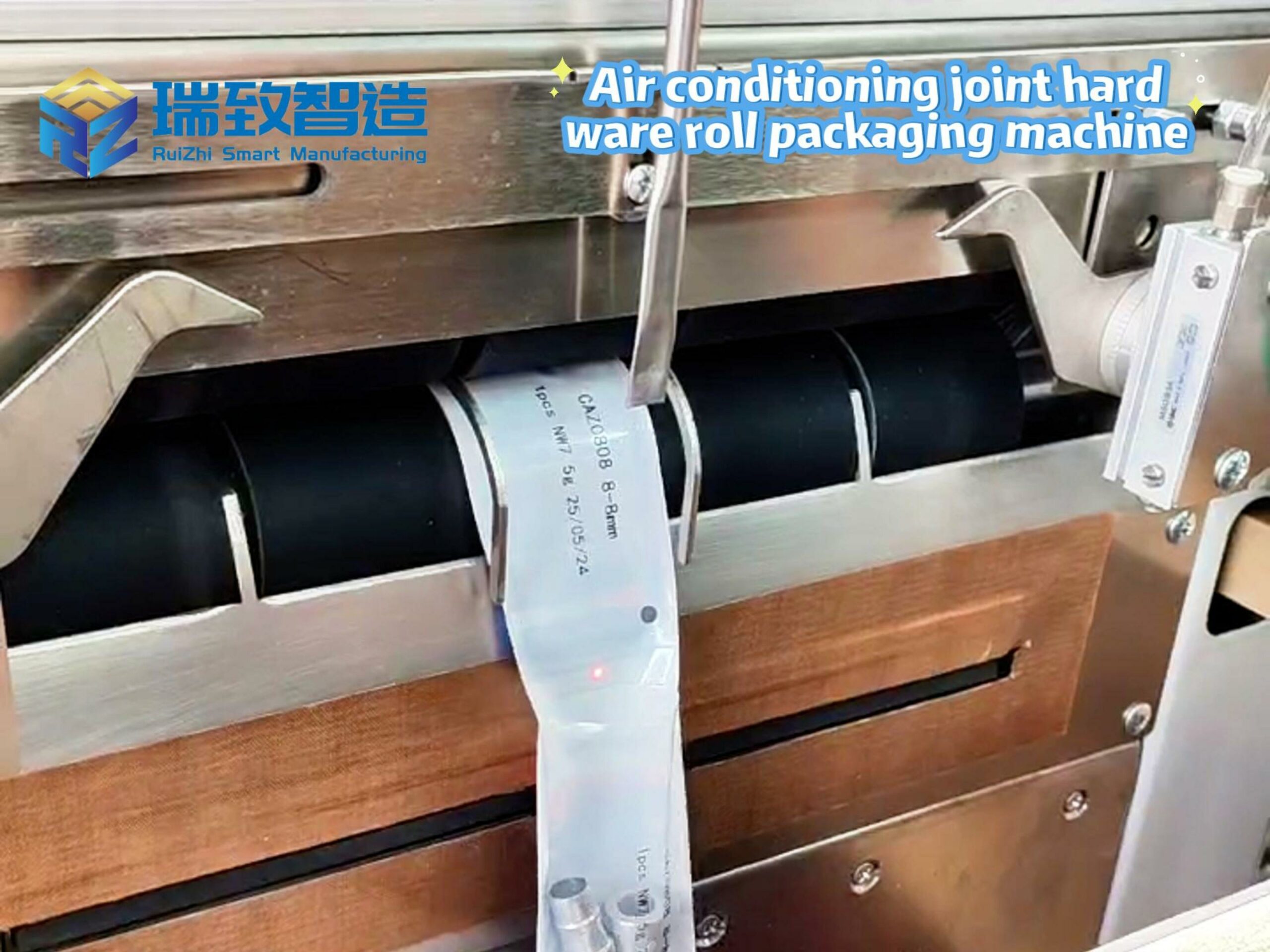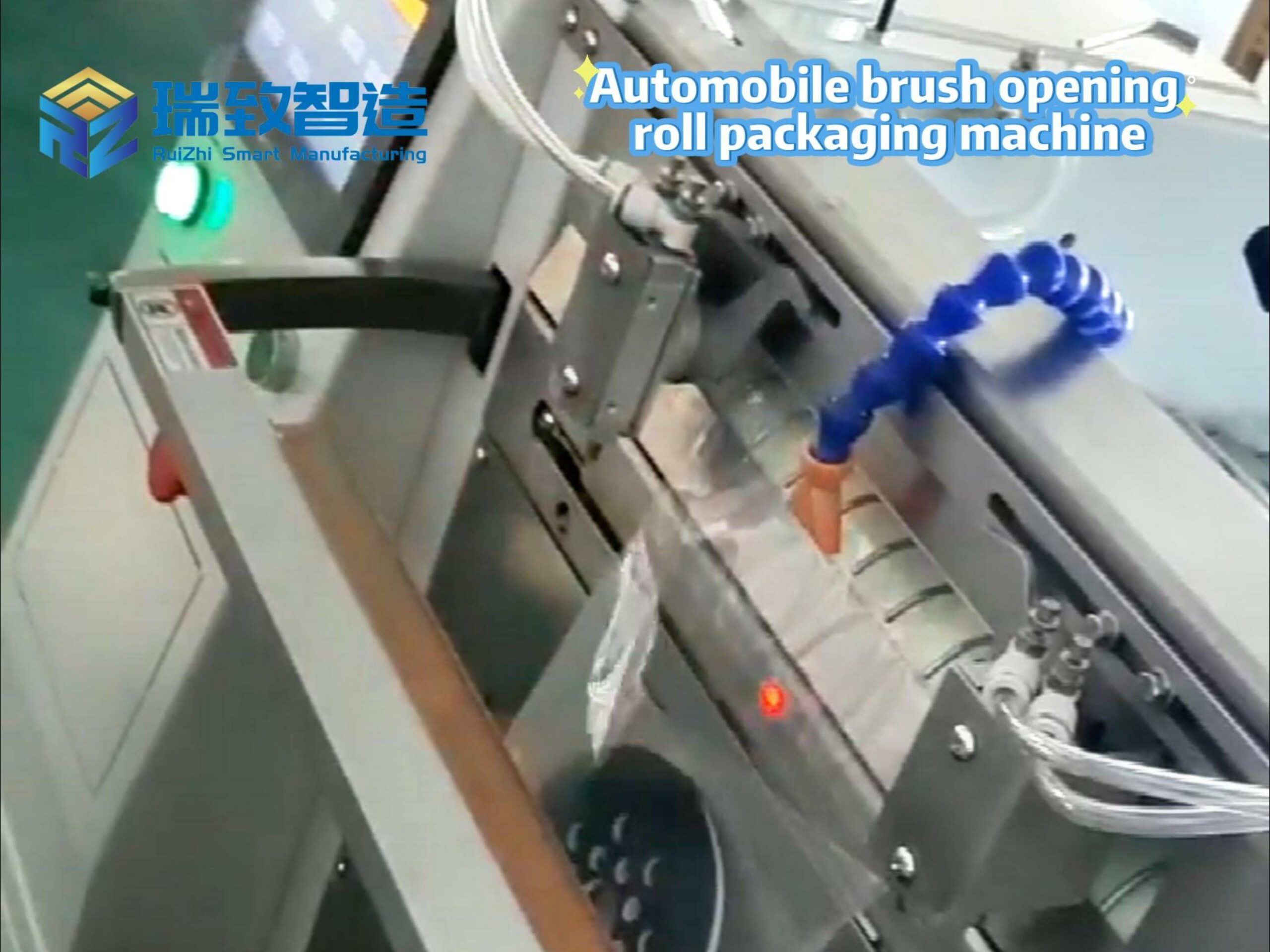In the intricate landscape of modern manufacturing, where products range from micro-sized medical implants to large-scale aerospace components, a one-size-fits-all approach to assembly is no longer viable. Enter CustomAssemblyMachines—specialized, tailor-made systems engineered to address unique production challenges that standard automation cannot solve. These machines are not just tools; they are precision-engineered solutions, designed to align with specific product geometries, materials, volumes, and quality standards. From assembling 0.1mm electronic chips to fitting turbine blades, CustomAssemblyMachines bridge the gap between complex requirements and efficient production, making them indispensable in industries where precision and adaptability are non-negotiable.
Table of Contents
ToggleDefining CustomAssemblyMachines: Beyond Off-the-Shelf Solutions
A CustomAssemblyMachine is a bespoke automated system built to perform specific assembly tasks, tailored to the unique needs of a product, process, or industry. Unlike standard assembly robots or conveyors—designed for general use—these machines are engineered from the ground up to handle challenges like:
- Unconventional part geometries (e.g., curved aerospace components, irregularly shaped medical devices).
- Specialized materials (e.g., fragile ceramics, high-temp alloys, biocompatible plastics).
- Extreme precision requirements (e.g., ±0.001mm alignment for optical components).
- Low-volume, high-mix production (e.g., 100 units of 50 different sensor variants).
At their core, CustomAssemblyMachines are problem-solvers. They transform manual, error-prone, or impossible-to-automate tasks into streamlined, repeatable processes—often enabling innovations that would otherwise remain stuck in prototyping.
Core Characteristics of CustomAssemblyMachines
What sets CustomAssemblyMachines apart is their ability to adapt to unique constraints. These defining traits make them irreplaceable in specialized manufacturing:
1. Task-Specific Design
Every component—from the frame to the software—is engineered for a singular purpose. For example:
- A machine assembling cochlear implants includes a custom gripper shaped to cradle the 3mm-wide device without damaging its internal electronics.
- A system building solar panel inverters integrates a specialized torque tool that tightens 12 bolts in a precise sequence, accounting for the inverter’s heat-sensitive circuit board.
2. Integration of Specialized Technologies
Custom machines combine off-the-shelf components (e.g., robotic arms, sensors) with proprietary innovations to meet unique needs:
- A medical device assembler might pair a standard 6-axis robot with a custom force-torque sensor calibrated to apply exactly 0.2N of pressure when inserting a catheter’s balloon.
- An aerospace machine could use a standard vision system but with custom lighting (e.g., UV illumination) to detect micro-cracks in titanium parts during assembly.
3. Flexibility Within Specificity
While designed for a primary task, CustomAssemblyMachines often include modular elements to handle minor variations:
- A machine building 5 variants of a hydraulic valve can switch between O-ring sizes via quick-change grippers, reducing changeover time from hours to minutes.
- A consumer electronics assembler adjusts its screw-tightening parameters via software, accommodating both plastic and metal casings for different product models.
4. Compliance and Traceability
In regulated industries (medical, aerospace, automotive), CustomAssemblyMachines are built to enforce strict standards:
- A pharmaceutical device assembler logs every step (e.g., “Part A inserted at 14:32, torque applied: 0.3N”) in a secure database, ensuring FDA compliance.
- An aerospace machine includes in-line laser measurement systems that verify component alignment to within ±0.01mm, with results stored for audit trails.
The Engineering Process: Building a CustomAssemblyMachine
Creating a CustomAssemblyMachine is a collaborative, multi-phase journey that merges engineering expertise with deep understanding of the client’s needs. Here’s how it unfolds:
1. Needs Assessment and Design
The process begins with a deep dive into the product and production goals:
- Product Analysis: Engineers study part geometries (via 3D CAD models), materials (e.g., brittle glass, flexible polymers), and assembly steps (e.g., gluing, fastening, welding).
- Production Requirements: Volume (100 units/year vs. 10,000/day), cycle time targets (e.g., 10 seconds per unit), and quality standards (e.g., zero defects for medical devices) are mapped.
- Constraint Identification: Challenges like limited factory floor space, cleanroom requirements (ISO 5), or compatibility with existing equipment are flagged.
From this, a conceptual design emerges—often visualized via 3D renderings or digital twins—to ensure alignment with the client’s vision.
2. Prototyping and Testing
A physical prototype (or sub-system) is built to validate critical functions:
- For a microelectronics assembler, a prototype might test the precision of a custom pick-and-place mechanism handling 0.5mm chips.
- For a heavy machinery assembler, a prototype could validate the strength of a custom lifting arm designed to maneuver 50kg components.
Testing focuses on failure modes: What happens if a part is misfed? Can the machine detect a defective component? Iterations refine the design until performance meets specs.
3. Integration and Validation
The full machine is assembled, integrating all systems (mechanical, electrical, software) and tested in a simulated production environment:
- Mechanical Validation: Ensuring moving parts (e.g., conveyors, robotic arms) operate within tolerance and without interference.
- Software Debugging: Custom control algorithms (e.g., for synchronizing two robots to assemble a part) are refined to eliminate delays or errors.
- End-to-End Testing: Running the machine with production parts to verify cycle times, defect rates, and compliance with all requirements.
4. Deployment and Optimization
Once validated, the machine is installed on the client’s floor, with training for operators and technicians. Post-deployment, engineers monitor performance remotely, making tweaks to optimize efficiency—e.g., adjusting a vision system’s calibration to reduce false rejects.
Key Technologies Powering CustomAssemblyMachines
CustomAssemblyMachines leverage a mix of standard and proprietary technologies, chosen for their ability to meet specific needs:
1. Mechanical Systems: The “Muscle”
- Custom End-Effectors: Grippers, nozzles, or tools shaped to match unique part geometries. For example, a machine assembling hearing aids uses a silicone-tipped gripper to cradle the 3mm device without scratching it.
- Specialized Conveyors: Magnetic tracks for metal parts, vacuum belts for lightweight electronics, or cleanroom-compatible stainless-steel systems for medical devices.
- Precision Positioning Stages: Linear or rotational stages (e.g., from THK or Hiwin) that move components with ±0.005mm accuracy—critical for aligning optical lenses.
2. Sensing and Inspection: The “Eyes”
- Custom Vision Systems: Cameras paired with specialized lenses (e.g., macro lenses for micro-parts) and lighting (e.g., backlighting to detect part edges) to guide assembly or inspect quality.
- Laser Profilers: 3D laser scanners that map part surfaces, ensuring proper fit (e.g., verifying that a rubber seal aligns with a metal housing).
- Force/Torque Sensors: Calibrated to detect minute pressures, these ensure tasks like crimping wires or inserting pins are done with exact force (e.g., 0.1N for delicate sensors).
3. Control and Software: The “Brain”
- Custom PLC Programs: Logic controllers programmed to coordinate machine actions (e.g., “Wait for part to arrive → Activate gripper → Move to assembly station”).
- Human-Machine Interfaces (HMIs): Touchscreens with custom dashboards that let operators adjust parameters (e.g., torque settings) or troubleshoot errors (e.g., “Part misfeed: Check conveyor speed”).
- Data Integration: Software that feeds assembly data (e.g., cycle times, defect rates) to the client’s MES (Manufacturing Execution System) for production monitoring.
Industry Applications: Where CustomAssemblyMachines Shine
CustomAssemblyMachines solve unique challenges across industries, proving their value in scenarios where standard automation falls short:
Medical Devices: Precision for Life-Saving Products
Medical device assembly demands microscopic precision, biocompatibility, and zero defects—making custom machines indispensable:
- Case Study: A U.S. company needed to assemble a 5mm-diameter pacemaker lead (with 12 tiny electrodes). A custom machine was built with:
- A micro-robotic arm (payload: 5g) with a custom gripper to handle the fragile wire.
- A vision system with a 10x macro lens to align electrodes within ±0.005mm.
- A UV curing station integrated into the line to bond components without heat (avoiding damage to electronics).
Result: Defect rates dropped from 8% (manual assembly) to 0.02%, and production capacity increased 5x.
Aerospace: Handling Large, High-Value Components
Aerospace parts (e.g., turbine blades, wing spars) are large, expensive, and require extreme precision—custom machines ensure safe, accurate assembly:
- Case Study: A European aerospace firm needed to assemble a 3m-long aircraft wing section, joining carbon fiber panels with 200+ fasteners. A custom machine featured:
- A gantry robot (reach: 4m) with a custom torque tool that adjusts pressure based on panel thickness.
- Laser trackers (accuracy: ±0.02mm) that real-time monitor the wing’s position, compensating for thermal expansion.
- A vacuum clamping system to hold panels steady without damaging their surface.
Result: Assembly time per wing dropped from 8 hours (manual) to 2 hours, with zero fastener failures (critical for flight safety).
Electronics: Micro-Assembly for Miniaturized Devices
As consumer electronics shrink (e.g., foldable phones, IoT sensors), custom machines handle sub-millimeter components:
- Case Study: A Asian tech firm needed to assemble a 2mm-thick smartwatch battery, inserting a 0.3mm charging pin into a plastic housing. A custom machine included:
- A piezoelectric gripper (generates tiny, precise movements) to pick the pin.
- A force sensor to apply exactly 0.1N of pressure during insertion (avoiding housing cracks).
- A vision system with LED backlighting to verify pin alignment post-insertion.
Result: The machine assembles 1,200 batteries per hour—10x faster than manual assembly—with 100% quality checks.
Heavy Machinery: Power and Precision for Large Parts
Manufacturers of construction equipment, agricultural machinery, or industrial pumps rely on custom machines to handle heavy, bulky components:
- Case Study: A German firm needed to assemble a 200kg hydraulic pump, inserting 6 precision bearings into a cast iron housing. A custom machine featured:
- A hydraulic lift system to position the housing (reducing operator strain).
- A robotic arm with a custom magnetic gripper to handle bearings (avoiding oil contamination).
- An in-line ultrasonic tester to verify bearing seating (detecting gaps as small as 0.02mm).
Result: Assembly time cut by 40%, and warranty claims (due to bearing failures) dropped 70%.
Advantages Over Standard Automation
CustomAssemblyMachines outperform standard automation in key metrics that matter for specialized production:
| Metric | Standard Automation | CustomAssemblyMachine |
| Precision | Limited to general specs (±0.1mm) | Tailored to needs (e.g., ±0.001mm) |
| Part Compatibility | Works with common geometries | Handles unique shapes (curved, fragile) |
| Cycle Time Efficiency | Optimized for average tasks | Tuned for specific steps (faster for unique processes) |
| Defect Reduction | Moderate (1–2% defects) | Dramatic (often <0.1% defects) |
| Compliance | Basic tracking | Audit-ready data for regulated industries |
Challenges and Mitigation Strategies
While powerful, CustomAssemblyMachines come with unique challenges that require careful planning:
1. High Initial Cost
Custom machines cost 2–5x more than standard systems due to design, prototyping, and specialized components.
Solution:
- ROI Analysis: Calculate long-term savings (e.g., reduced labor, fewer defects) to justify upfront investment. For example, a $500k medical device machine can pay for itself in 18 months via reduced rework.
- Phased Design: Build core functionality first, then add modules (e.g., extra inspection stations) later as budget allows.
2. Longer Development Time
Designing and building a custom machine takes 3–12 months, vs. weeks for standard automation.
Solution:
- Parallel Development: Overlap design and prototyping with product development to avoid delays.
- Digital Twins: Use virtual simulations to test designs, reducing physical prototyping time by 30–50%.
3. Maintenance Complexity
Custom components (e.g., proprietary grippers) can be harder to repair than standard parts.
Solution:
- Modular Design: Use standard components where possible (e.g., off-the-shelf motors) and make custom parts easy to swap.
- Training and Documentation: Provide operators with detailed manuals, 3D models of custom parts, and on-site training for repairs.
4. Limited Flexibility for Major Product Changes
A machine built for one product may struggle if the product is redesigned.
Solution:
- Future-Proofing: Design with adjustability (e.g., software-controlled parameters, modular tooling) to accommodate minor product tweaks.
- Retrofitting Options: Plan for upgrades (e.g., new vision systems) if major product changes are anticipated.
Future Trends: The Evolution of CustomAssemblyMachines
As technology advances, CustomAssemblyMachines are becoming smarter, more adaptable, and more integrated with broader production systems:
1. AI-Driven Adaptive Control
Machine learning algorithms will enable custom machines to adjust to variations in real time:
- A medical device assembler detecting inconsistent part dimensions (due to supplier variations) will autonomously tweak its gripper pressure to maintain quality.
- AI will predict maintenance needs (e.g., “Lubricate robotic joint after 10,000 cycles”) to reduce downtime.
2. Digital Twin Integration
Virtual replicas of custom machines will enable:
- Remote monitoring: Engineers can troubleshoot issues (e.g., a misaligned gripper) by analyzing data from the twin, without being on-site.
- Rapid reconfiguration: Testing new assembly steps for a product variant in the twin before updating the physical machine, saving weeks of downtime.
3. Sustainable Design
Custom machines will prioritize energy efficiency and material reuse:
- A custom electronics assembler could use regenerative braking on its robotic arm to recapture energy, cutting power use by 20%.
- Modular designs will allow components (e.g., vision systems) to be repurposed when the machine is retired, reducing waste.
4. Human-Cobot Collaboration
Custom machines will integrate collaborative robots (cobots) to combine human judgment with robotic precision:
- A technician loads a fragile part into a custom machine; the cobot assembles it, while the human monitors via a touchscreen—ideal for low-volume, high-value products.
Conclusion: CustomAssemblyMachines as Enablers of Innovation
CustomAssemblyMachines are more than tools—they are enablers of what’s possible in manufacturing. In a world where products grow increasingly complex, and industries demand higher precision, efficiency, and compliance, these bespoke systems bridge the gap between ambition and execution.
From life-saving medical devices to flight-critical aerospace components, from microelectronics to heavy machinery, CustomAssemblyMachines prove that when standard automation falls short, tailored innovation delivers. As technology advances, their role will only grow—driving progress in industries where “good enough” is never enough. For manufacturers pushing the boundaries of what can be built, CustomAssemblyMachines are not just an investment—they are the foundation of competitive advantage.
#flexible automation systems pvt ltd #flexible automation systems

